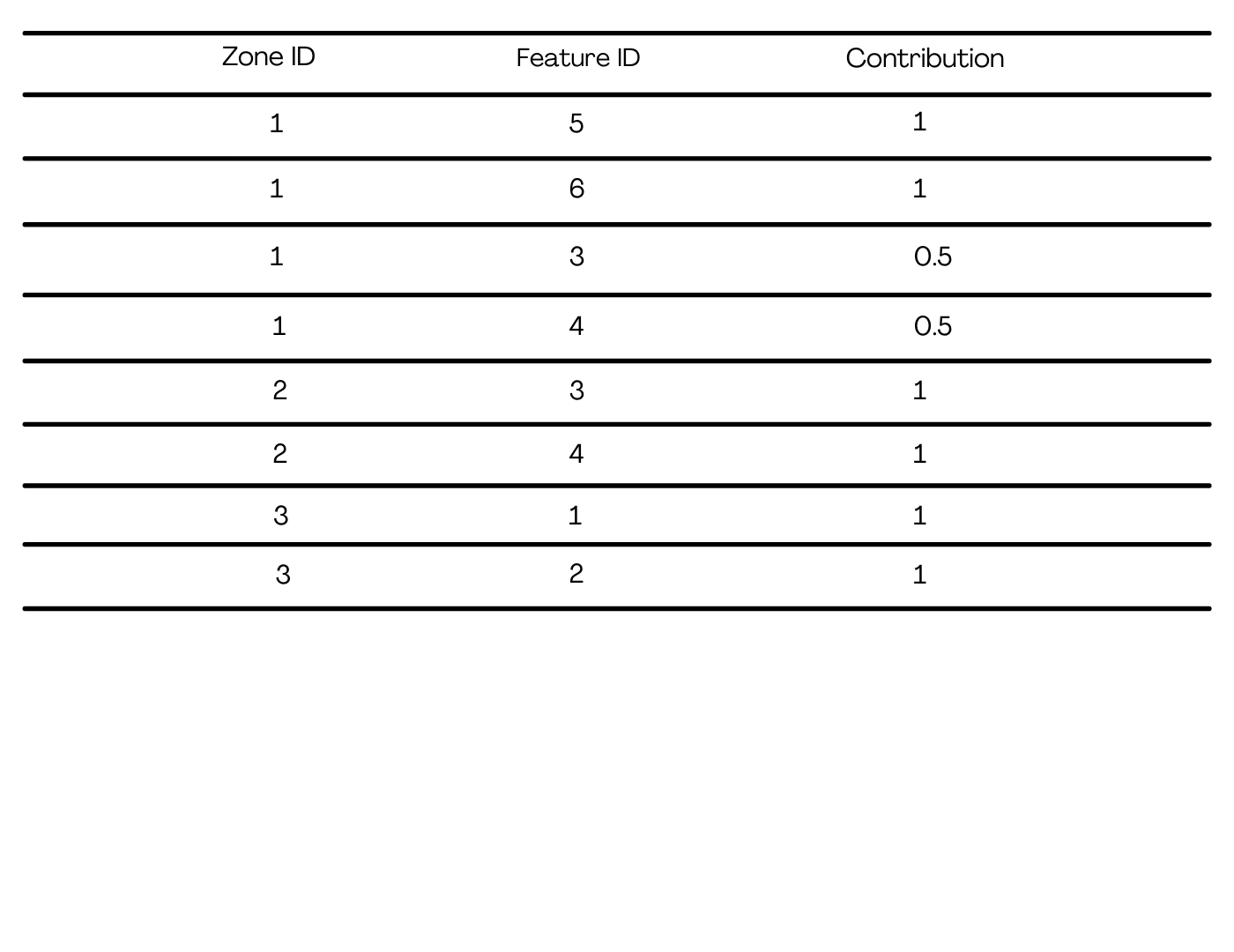Zone contribution.
In standard Marxan with Zones, users have the option to define zone contributions (how much each feature contributes towards meeting targets within each zone). If an overall target has been set then it is mandatory that zone contributions are set. This is useful if you have several different types of features and if you want the overall target to be met across multiple zones. Zone contributions can be set either for each feature within each zone.
Example contribution of each feature to each zone (set as a proportion).

TOY PROBLEMS TO DEMONSTRATE ZONE CONTRIBTUION
In this example, we have single coral feature with a distribution across 4 planning units (PU) and the amount of coral found in each PU is specified. Based on the zone contributions assigned in the table below (same as Table 5), we can examine how this contribution works in Marxan’s accounting of the overall target achievement, which we have set at 15 km2 coral habitat. Placing a planning unit with coral habitat into Zone 1 or Zone 2 means the contribution of that planning unit towards the overall target for the coral feature is multiplied by the value specified in table above. In solution 1, the coral target is not met because the partial protection zones only give 20% of the coral found in PU1 and PU3. In solution 2, PU1 and PU3 are allocated to the High Protection Zone, so we count the full amount of coral reef and meet our target.

One of the strengths of Marxan with Zones is that you can assign unique zone contributions to every feature and zone in your planning problem. Let’s look at an example with more than one feature. Here we have two species found in Borneo: the orangutan (Pongo pygmaeus) and a rare epiphytic plant (Thrixspermum erythrolomum).
These species share the landscapes with many human activities and our zoning framework allows for three zones: 1) Conservation, 2) Sustainable Logging and 3) Agriculture. Each zone contributes differently to the species targets. For example, zones that allow for sustainable logging contribute less for meeting the plant’s targets (30%) than for orangutans (60%) - as orangutans can still manage in modified landscapes with less structural complexity while the epiphytic plant s will have a more difficult time. Both will thrive in a fully protected area, so the contribution of the Conservation Zone is 100% for both.

REFERENCES.
Serra-Sogas N., Kockel A, Williams, B., Watts, M., Klein, C., Stewart, R., Ball, I., Game, E., Possingham, H., & McGowan J. (2020). Marxan with Zones User Manual. For Marxan with Zones version 2.0.1 and above. The Nature Conservancy (TNC), Arlington, Virginia, United States and Pacific Marine Analysis and Research Association (PacMARA), Victoria, British Columbia, Canada. https://marxansolutions.org/wp-content/uploads/2021/07/MarZone_User_Manual_2021.pdf
